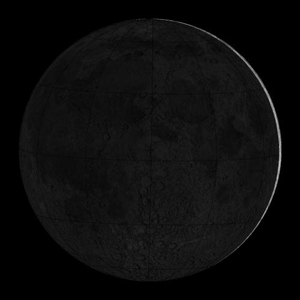Good Morning Readers:
 This week a rare convergence brings us a unique series of lunar events, first the aurora borealis on the 18th and now a solar eclipse — on the Spring Equinox which just happens to be the Supermoon. In addition, the moon enters the 1st of the signs of the Zodiac, Aries, at 6:28 am. Today
This week a rare convergence brings us a unique series of lunar events, first the aurora borealis on the 18th and now a solar eclipse — on the Spring Equinox which just happens to be the Supermoon. In addition, the moon enters the 1st of the signs of the Zodiac, Aries, at 6:28 am. Today
This is the Earth's first — and only — total solar eclipse of the year and the first one since November 2013, NASA reports. The next total solar eclipse in the USA will be in August 2017.
The Spring Equinox is night and day are nearly exactly the same length – 12 hours – all over the world, the sun will shine directly on the equatator at 6:45 pm today.Today we will also experience a Supermoon. The Supermoon is a full or new moon that occurs during the moon's closest approach to Earth on its elliptical orbit, according to AccuWeather. A Super Moon is a new or full moon which occurs with the moon at or near (within 90% of) its closest approach to Earth in a given orbit. Unfortunately, the eclipse will not be visible in the United States This is the Earth's first — and only — total solar eclipse of the year and the first one since November 2013, NASA reports
Those of us in the USA can watch the eclipse online starting at 4:30 a.m. ET Friday on Slooh.com.
Spring Equinox:
On the equinox, night and day are nearly exactly the same length – 12 hours – all over the world. This is the reason it's called an “equinox”, derived from Latin, meaning "equal night". However, in reality equinoxes don't have exactly 12 hours of daylight
New Moon:
We can’t see the new moon from Earth, except during the stirring moments of a solar eclipse. Then the moon passes in front of the sun, and the night portion of the moon becomes visible to us, surrounded by the sun’s fiery corona.
Once each month, the moon comes all the way around in its orbit so that it is more or less between us and the sun. If the moon always passed directly between the sun and Earth at new moon, a solar eclipse would take place every month. But that doesn’t happen every month. Instead, in most months, the moon passes above or below the sun as seen from our earthly vantage point.
On the day of the new moon, the moon rises when the sun rises. It sets when the sun sets. It crosses the sky with the sun during the day. That’s why we can’t see the new moon in the sky. It is too close to the sun’s glare to be visible. Plus its lighted hemisphere is facing away from us.
Super Moon
What makes it super? It's when a full or new moon coincides with perigee — the moon's closest point to Earth in its orbit. Basically, the Supermoon, when full, appears a bit bigger and brighter than usual in the night sky.
Since this Supermoon is during a new moon, it will not be visible, but it will block out the sun during the solar eclipse.
Moon in Aries:
Nothing quite happens soon enough with this position of the Moon. There is an inherent impatience with getting what they want. Life is a series of emergencies for Lunar Ariens. They live in the moment and have a hard time waiting for things to happen. Whims of the moment take absolute precedence in their lives.
No comments:
Post a Comment